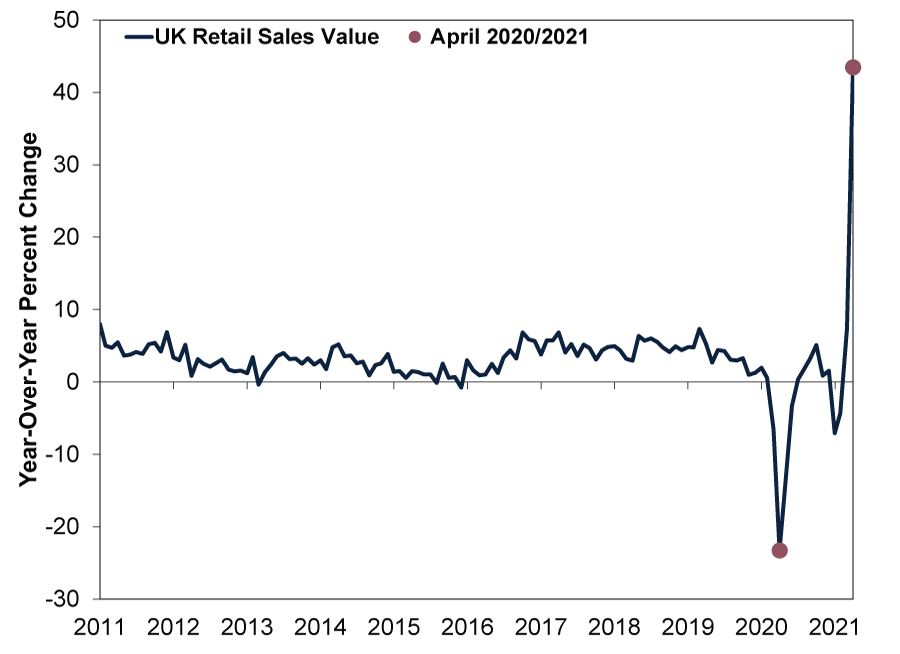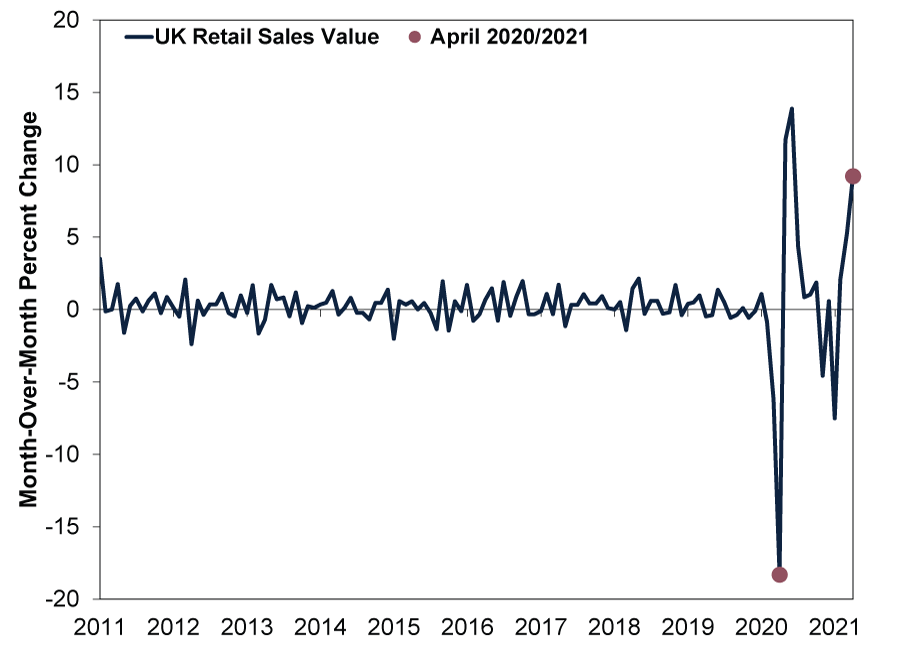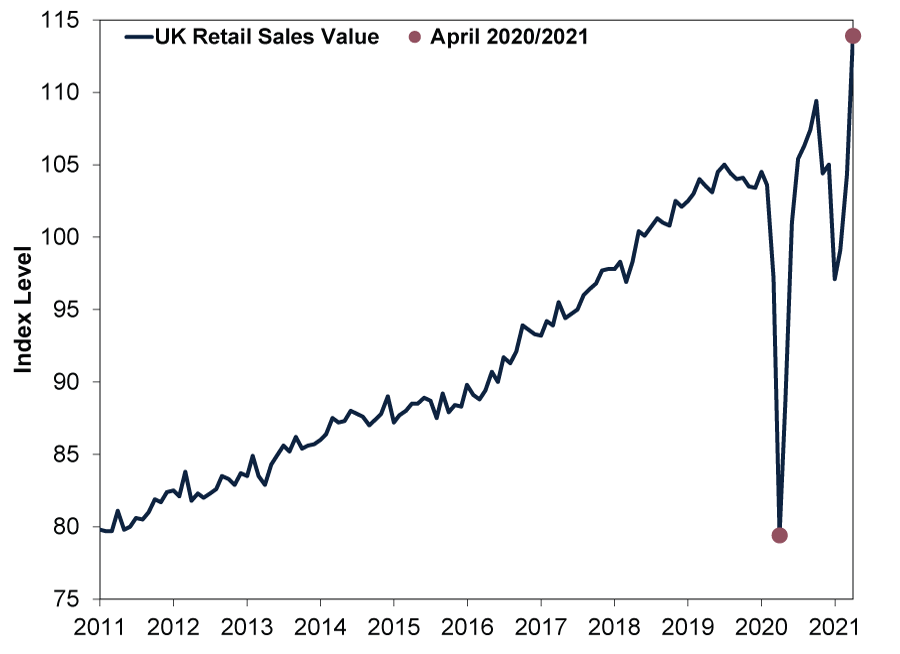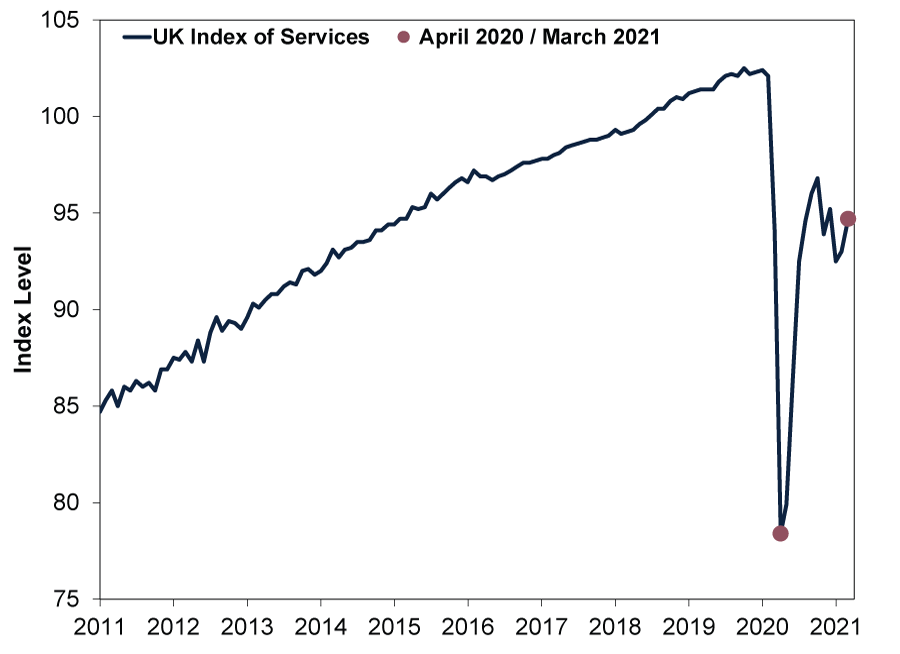Personal Wealth Management / Economics
Levels Vs. Rates: Navigating Pandemic-Skewed Data
How to look through lockdown skew—and approach economic data generally.
Last week, economic data releases showed April UK car registrations spiked 3,176.6% y/y—a huge increase, which some investors could see as bullish.[i] Britain’s inflation rate also “more than doubled” to 1.5% y/y—which may not be so bullish.[ii] Meanwhile, Japanese exports leapt 38.0% y/y, the “most in a decade,” whilst Taiwan’s export orders “surged” 42.6%.[iii] Then again, on the not so great side perhaps, Chinese industrial production growth dwindled to 9.8% y/y from March’s 14.1% (and from over 35% in January – February).[iv] Of course, lockdowns shuttering activity late last spring (early Q1 in China) heavily skewed year-over-year growth figures by vastly reducing the denominator in the calculation, driving the eye-popping results. Given such huge skew, how can investors get a better sense of where the economy is today? Instead of focusing on exaggerated rates of change, we suggest looking at economic series’ actual levels.
Headlines typically highlight rates of change. Take last Friday’s April UK retail sales report, for example. In value-spent terms, UK retail sales “soared” 43.5% y/y, accelerating from 7.3% in March.[v] (Exhibit 1) That figure may grab attention, but we think a growth rate far above anything in recent history lacks needed perspective for investors without added context. In this case, it mostly speaks to the low base a year ago—a look backward, skewed by the shutdown and reopening—which we think tells you little about where the economy is going. For investors in forward-looking markets, that is what counts, in our experience.
Exhibit 1: Record Year-Over-Year Growth Isn’t Quite What It Seems
Source: FactSet, as of 21/5/2021. UK retail sales value, January 2011 – April 2021.
Now, many articles we read acknowledged this and instead highlighted month-to-month changes relative to their recent trends. But as Exhibit 2 shows, those have been all over the place, too. Does April’s 9.2% m/m bounce, which rivalled May and June 2020’s reopening rebounds, tell you anything about where the economy is heading?
Exhibit 2: Neither Is Astounding Monthly Growth
Source: FactSet, as of 21/5/2021. UK retail sales value, January 2011 – April 2021.
Given the extremity of the lockdowns’ impact on data, we think the rate of change is too skewed to yield great insights. That is often true for some series even during non-COVID times. One prominent example is the US’s durable goods orders report, which measures factory orders for goods that last at least three years. It can display huge month-over-month swings any time there is a major airshow, as aircraft orders are included—and jet planes’ huge price tags give it outsized sway. Airshows often create gigantic one-off booms in aircraft orders in the month, setting up a big drop the next, when there is no airshow—which can bleed through to the headline figures in a big way.[vi] We think observing a one-off record jump isn’t too helpful without understanding the trend and where the gauge is exactly.
In our view, to see the actual trend, it is most helpful to look to the actual levels—the actual value of output, as measured in pounds (or whatever currency the reporting country uses), or the index level. (Exhibit 3) UK retail sales fell off a cliff last April, more than recovered through 2020’s summer and fall, then dipped again during the winter’s second lockdown. But now, sales are hitting new highs again.
Exhibit 3: Levels Give a Better Picture of What Happened
Source: FactSet, as of 21/5/2021. UK retail sales value, January 2011 – April 2021.
Whilst encouraging, keep in mind retail sales are just a small slice of the UK economy—a narrow snapshot of shopping activity last month.[vii] That has also been greatly boosted by digital commerce, allowing storefronts to bypass lockdown restrictions.[viii] But that is starting to even out, according to official data and private surveys, suggesting to us a return to normal (and less blistering growth rates) lies ahead.[ix]
For a broader view though, consider services—about 80% of UK GDP.[x] (Exhibit 4) Next month, the Index of Services is likely to soar on a year-over-year basis, but it will probably be due mostly to statistical noise. In March 2021, the latest data available, it registered 94.7—just 0.6% above March 2020’s 94.1.[xi] But last April, amid lockdowns, it tumbled to 78.4. If there is no change from last month’s reading, the Index will “soar” a huge 20.8% y/y. But looking at levels helps strip out that noise. It lets you see that UK services are -7.2% below their February 2020 pre-pandemic level—well above the -23.2% nadir at April 2020’s depths, but in a hole nonetheless. Focusing on volatile rates of change only could lead you to wrong conclusions.
Exhibit 4: Note the Bigger Picture, Too
Source: FactSet, as of 21/5/2021. UK Index of Services, January 2011 – March 2021.
So, where can you find data on an indicator’s level when coverage isn’t forthcoming? Governments’ statistical agencies are usually a handy go-to source. In the UK, most economic data are readily available through the Office of National Statistics. For EU and eurozone data, try Eurostat. In America, the St. Louis Federal Reserve’s database aggregates a useful array of data from the various statistical groups that compile them. Other countries’ official economic statistics are also typically available on public-facing websites.
That said, based on our research, what matters for markets going forward are big deviations from what investors currently expect—not what is already publicly disseminated and therefore probably priced in. Economic data—no matter how you slice and dice them—are generally limited in that regard. They are inherently backward looking, covering past events. But if you see reports hyping big rates of change, we think it best to check where the level is. It can give you better insight into just how meaningful those huge rises or falls may be.
[i] “Europe New-Car Registrations Soar 256% From Pandemic Low Point,” William Wilkes, Bloomberg, 18/5/2021.
[ii] “UK Inflation Rate More Than Doubles in April,” Staff, BBC, 19/5/2021.
[iii] “Japan’s Exports Jump Most in Decade as Trade Recovery Perks Up,” Tetsushi Kajimoto and Daniel Leussink, Reuters, 20/5/2021. “Taiwan’s Export Orders Surge for 14th Straight Month,” Ching-Tse Cheng, Taiwan News, 21/5/2021.
[iv] “China Industrial Output, Fixed Asset Investment Growth Moderates,” Staff, RTTNews, 16/5/2021.
[v] “UK Retail Spending Soars as Economy Reopens,” David Milliken and Andy Bruce, Reuters, 21/5/2021.
[vi] Source: US Commerce Department, as of 27/5/2021.
[vii] Source: ONS, as of 27/5/2021. Statement based on UK retail sales value share of GDP.
[viii] Ibid. Statement based on April UK retail sales.
[ix] “UK Shoppers Return to Supermarkets as Online Spending Slows,” Sarah Butler, The Guardian, 25/5/2021.
[x] Source: ONS, as of 27/5/2021. Statement based on UK services value share of UK GDP.
[xi] Source: FactSet, as of 25/5/2021.
Get a weekly roundup of our market insights.
Sign up for our weekly e-mail newsletter.

See Our Investment Guides
The world of investing can seem like a giant maze. Fisher Investments UK has developed several informational and educational guides tackling a variety of investing topics.








